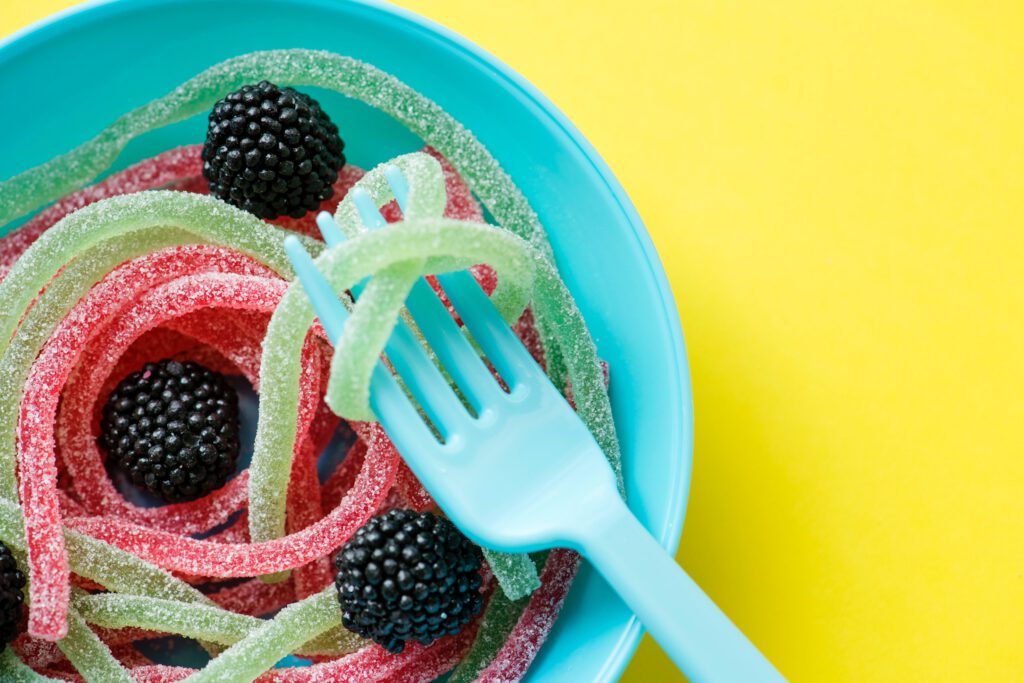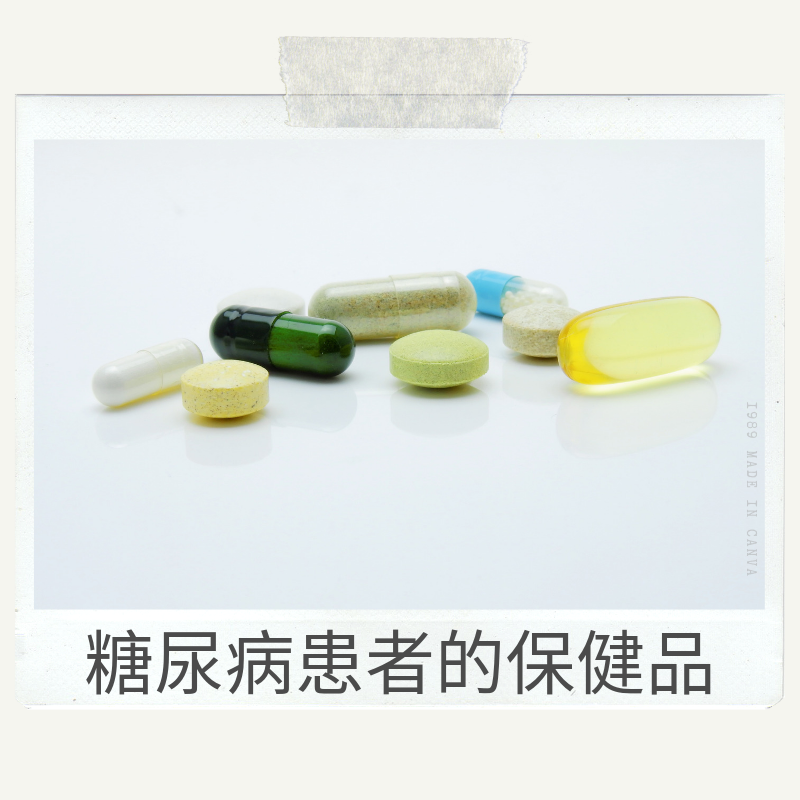
马来西亚的糖尿病病例在世界排名上“名列前茅”,更是亚洲之首。这和我国的肥胖率有着直接的关系(我国肥胖率为东南亚最高)。在我国,糖尿病的患病率为17%,这个数字将会继续攀升。虽然现今我国已有很多种能够控制糖尿病病情的药物,可是由于药物的一些副作用和一些病患与药物的不适性,造成了很多糖尿病患者的病情无法得到最佳的控制。一项国际性的统计分析发现有多达30%的糖尿病患者服用保健品以帮助血糖的控制。这里将会提到一些常见且有助于控制血糖的保健品,但切记在服用前请再三寻求医生和药剂师的建议。
硫辛酸 (α-lipoic acid, ALA)(1,2,3)
在高血糖的情况下,身体会处于高氧化压力。因一连串在体内的复杂化学作用,高血糖会导致更多自由基的产生,而造成体内的高氧化压力。这些自由基将导致很多负面影响,例如心血管疾病和神经系统衰弱。因此多数糖尿病患者都会有手脚麻痹的症状。硫辛酸能够抑制自由基的产生,也是一种强效的抗氧化剂,不仅能够中和自由基以避免体内细胞和器官受到破坏,也能够有效的强化和增加体内其他的抗氧化剂,例如谷胱甘肽(gluthathione)、维生素C和维生素E。一些研究也证实了硫辛酸能够提高糖尿病患者细胞对胰岛素的敏感度。
建议剂量:600毫克/天
铬 (Chromium)(4,5,6,7)
铬在理论上能够帮助提高细胞对胰岛素的敏感度,对于二型糖尿病患者有着显著的帮助。此外,也能够对于使用胰岛素或促胰岛素释放药物的糖尿病患者有着一定的帮助。虽然目前为止对于铬是否能够有效帮助控制糖尿病还没有个确切的答案(因多个不同的临床试验都不能给出一致的结果),但是铬还是被糖尿病患者广泛使用的。一些试验确实能够证明铬能够有效地帮助减低饭前和饭后的血糖水平以及降低糖化血红蛋白;其帮助在于使用促胰岛素释放药物的糖尿病患者更为显著。
建议剂量:200-1000微克/天
苦瓜(Bitter melon)(8,9,10,11,12)
苦瓜对亚洲人来说并不陌生。不只亚洲,苦瓜在非洲和拉丁美洲也被广泛用于控制糖尿病病情。但由于目前为止对于苦瓜控制糖尿病的试验并不多,因此苦瓜并未被医学界正式用于控制糖尿病。虽然如此,目前我们还是有一些临床试验给出了正面的结果。苦瓜能够于人体内多方面控制血糖水平,即做为一种促胰岛素、增加肌肉和其他细胞的糖分用量、保护胰岛细胞与确保其功能正常、和控制肠道对于饭后糖分的吸收。苦瓜可以茶、汁或药囊的形式服用。
建议剂量:400-600毫克/天
胡芦巴 (Fenugreek)(12,13,14,15)
葫芦巴被用作草药的历史久远,可追溯至古埃及文明的时代。至今已有许多对于葫芦巴被用于控制血糖的试验研究。多数的研究显示葫芦巴能够有效的帮助降低血糖以及增加胰岛素的生成。葫芦巴的种子富含纤维,这些纤维能够减缓胃排空的速度和肠道对于碳水化合物的吸收,从而降低血糖。此外,葫芦巴也被证实具有抗氧化的功能,有助于降低因高血糖所引起的并发症风险。
建议剂量:2.5-100毫克/天
武靴 (Gymnema sylvestre)(16,17,18)
在印度,武靴被用作草药已有2000年的历史。近年来很多科学研究发现武靴具备降低血糖的功能。武靴能够将甜味的味蕾麻痹,以减低对于食用甜食的食欲。武靴也有助于修复胰岛细胞的功能、刺激胰岛素的生成以及增加有助于燃烧糖分的酶,对于二型糖尿病或血糖不耐症患者有着显著的效果。减低及延缓肠道对糖分的吸收也是武靴的功能之一。
建议剂量:400-600毫克/天
维生素D(19,20,21,22)
与其他上述所提到的保健品相比,维生素D是在近年来被发现与糖尿病有所关联。对于一型糖尿病,一些研究显示维生素D具有免疫调节的功能(一型糖尿病是由于自身的免疫系统错误攻击胰岛细胞,而造成胰岛素无法生成),这有可能尽早帮助到一型糖尿病患者控制胰岛细胞的功能。而对于二型糖尿病,维生素D能够帮助增加人体细胞上的胰岛素受体,从而提高细胞对于胰岛素的敏感度。科学家也发现在胰岛细胞中发现维生素D受体,推断出维生素D的多寡可能与胰岛细胞的生成有着紧密的联系。此外,维生素D也能够控制体内的炎症,并保护及修复胰岛细胞的功能。
建议剂量:400-1000 国际单位/天
姜黄/姜黄素 (Turmeric/curcumin) (23.24)
姜黄普遍被用于中药和阿育吠陀(ayuverda, 为印度传统医学) 医药中。姜黄里的主要药用成分为姜黄素,被广泛用于抑制体内炎症。控制住炎症既能避免胰岛细胞的损伤并避免二型糖尿病的发生。健康的胰岛细胞能够有效的产生足够的胰岛素。姜黄也有助于保持其他人体细胞的功能,并且保持或增加其对胰岛素的敏感度,从而减少血糖水平。
建议剂量:500-2000毫克/天
References:
- Amy P. Campbell. Diabetes and Dietary Supplements. Clinical Diabetes 2010; 28(1): 35-39; DOI: 10.2337/diaclin.28.1.35.
- Golbidi S, Badran M and Laher I (2011) Diabetes and alpha lipoic acid. Front. Pharmacol.2:69. doi: 10.3389/fphar.2011.00069
- Vallianou N, Evangelopoulos A, Koutalas P. Alpha-lipoic Acid and diabetic neuropathy. Rev Diabet Stud. 2009;6(4):230–236. doi:10.1900/RDS.2009.6.230
- Costello RB, Dwyer JT, Bailey RL. Chromium supplements for glycemic control in type 2 diabetes: limited evidence of effectiveness. Nutr Rev. 2016;74(7):455–468. doi:10.1093/nutrit/nuw011
- A scientific review: the role of chromium in insulin resistance. Diabetes Educ 2004; Suppl:2-14.
- William T. Cefalu, Frank B. Hu. Role of Chromium in Human Health and in Diabetes. Diabetes Care 2004; 27(11): 2741-2751; DOI: 10.2337/diacare.27.11.2741.
- Julie Martin, Zhong Q. Wang, Xian H. Zhang, Deborah Wachtel, Julia Volaufova, Dwight E. Matthews, William T. Cefalu. Chromium Picolinate Supplementation Attenuates Body Weight Gain and Increases Insulin Sensitivity in Subjects With Type 2 Diabetes. Diabetes Care 2006; 29(8): 1826-1832; DOI: 10.2337/dc06-0254.
- Joseph B, Jini D. Antidiabetic effects of Momordica charantia (bitter melon) and its medicinal potency. Asian Pac J Trop Dis. 2013;3(2):93–102. doi:10.1016/S2222-1808(13)60052-3
- Jasmin Ilkay. Bitter Melon — Fruit’s Role in Diabetes Management Is Promising But Uncertain. Today’s Dietitian 2011; 13(7): 10.
- Leung L, Birtwhistle R, Kotecha J, Hannah S, Cuthbertson S. Anti-diabetic and hypoglycaemic effects of Momordica charantia (bitter melon): a mini review. British Journal of Nutrition. Cambridge University Press; 2009;102(12):1703–8.
- Ethan Basch, Steven Gabardi, Catherine Ulbricht, Bitter melon (Momordica charantia): A review of efficacy and safety, American Journal of Health-System Pharmacy, Volume 60, Issue 4, 15 February 2003, Pages 356–359, https://doi.org/10.1093/ajhp/60.4.356
- Diabetes and Dietary Supplements.Campbell AP (2010). Clinical Diabetes.
- Gaddam A, Galla C, Thummisetti S, Marikanty RK, Palanisamy UD, Rao PV. Role of Fenugreek in the prevention of type 2 diabetes mellitus in prediabetes. J Diabetes Metab Disord. 2015;14:74. Published 2015 Oct 2. doi:10.1186/s40200-015-0208-4
- Mooventhan A., Nivethitha L. . A Narrative Review on Evidence-based Antidiabetic Effect of Fenugreek (Trigonella Foenum-Graecum). Int. J. Nutr. Pharmacol. Neurol. Dis 2017; 7(4): 84-87.
- Kaur, M., Singh, N., Sharma, G., & Singh, D. (2016). To study the efficacy and tolerability of fenugreek seed powder as add-on therapy with metformin in patients of type-2 diabetes mellitus. International Journal of Basic & Clinical Pharmacology, 5(2), 378-383. doi:http://dx.doi.org/10.18203/2319-2003.ijbcp20160748
- Kanetkar P, Singhal R, Kamat M. Gymnema sylvestre: A Memoir. J Clin Biochem Nutr. 2007;41(2):77–81. doi:10.3164/jcbn.2007010
- Pragya Tiwari, B. N. Mishra, and Neelam S. Sangwan. Phytochemical and Pharmacological Properties of Gymnema sylvestre: An Important Medicinal Plant. BioMed Research International 2014; 2014.
- Thakur, G.S., Sharma, R., Sanodiya, B.S., Pandey, M., Prasad, G.A., & Bisen, P.S. (2012). Gymnema sylvestre: An Alternative Therapeutic Agent for Management of Diabetes.
- Nakashima A, Yokoyama K, Yokoo T, Urashima M. Role of vitamin D in diabetes mellitus and chronic kidney disease. World J Diabetes. 2016;7(5):89–100. doi:10.4239/wjd.v7.i5.89
- Schwalfenberg G. Vitamin D and diabetes: improvement of glycemic control with vitamin D3 repletion. Can Fam Physician. 2008;54(6):864–866.
- Dalgård C, Petersen MS, Weihe P, Grandjean P. Vitamin D status in relation to glucose metabolism and type 2 diabetes in septuagenarians. Diabetes Care. 2011;34(6):1284–1288. doi:10.2337/dc10-2084
- Teresa Martin, R. Keith Campbell. Vitamin D and Diabetes. Diabetes Spectrum 2011; 24(2): 113-118; DOI: 10.2337/diaspect.24.2.113.
- Chuengsamarn S, Rattanamongkolgul S, Luechapudiporn R, Phisalaphong C, Jirawatnotai S. Curcumin extract for prevention of type 2 diabetes. Diabetes Care. 2012;35(11):2121–2127. doi:10.2337/dc12-0116
- Zhang DW, Fu M, Gao SH, Liu JL. Curcumin and diabetes: a systematic review. Evid Based Complement Alternat Med. 2013;2013:636053. doi:10.1155/2013/636053
Latest Health Info
Gut and Skin: How They Are Related?
Did you know that your gut and skin are connected? The gut-skin axis is the relationship between the microorganisms in ...
Ladies, Let’s Bring Out The Beauty In You
Ladies, Let’s Bring Out The Beauty In You As women juggle the demands of work, family, and personal health, taking ...
Healthy Weight, Happy Joints
How Does Weight Affect Knee Health? The Link Between Pounds And Pain Osteoarthritis (OA) involves the degeneration of joints, which ...




